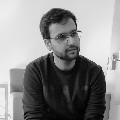Improvising education through media and activism
An insight into the power of cinema and emphasis on education through Media at Ashoka.

Shiv D Sharma
31 December, 2017 | 5 Mins readDecember, 2017: Uttar Pradesh, one of the most demographically complex states in India, was swept away by what was termed as the worst episode of violence in the state’s recent history in August 2013; the Muzaffarnagar riots resulted in at least 62 deaths, a score injured, and tens of thousands displaced. Nearly two years later, Nakul Sawhney’s Muzaffarnagar Baaqi Hai was released in August 2015 and welcomed with bans or cancellation of the screenings across the country because the documentary film was allegedly hurtful to the religious sentiments of Hindus. But this is nothing new; there are several other films, released this year itself that stirred the nation, including India’s Daughter, the BBC documentary on the 2012 Delhi gang rape case, and Unfreedom. Going back further in Bollywood’s history there have been films like Fire, Sins, Firaaq and Water, among several others.
Cinema, both commercial and parallel, has always served as a means to political action. At the same time, it has also been a subject of political agitation in its power to mobilise crowds and influence public opinion, making it an important pedagogical tool in education. Schools and universities across the country, thus, have also been organising film screenings to educate students on some of the most burning issues in society. And so it follows that film analysis and critique, as well as media studies, have also been a unique focus of academics at Ashoka University this year.
This year, Ashoka introduced a Minor programme in Media Studies and an Inter-disciplinary Major in English and Media Studies for its undergraduate students. Professor Vaiju Naravane, who offered two courses in Media Studies titled, ‘News Reporting and Writing: Principles of Journalism’, and ‘Understanding the Media Landscape’, believes that films and other media forms have been revolutionising the space occupied by social activism and education.
“There are several classic case studies to look at from around the world. For instance, the media debate on HIV forced the pharmaceutical giants in the West to provide the medicines at correct rates. On the other hand, we have a lot to learn from the mistreatment by media of the Indrani Mukherjee case,” said Naravane. As a part of her course, students were asked to work on a short film for which they went around campus looking for stories, whether it was interviewing construction workers and other staff on their lives, or demanding answers to problems from the administration. Apart from these two courses, students were offered a co-curricular course on ‘Constructing Cinema’ by Professor Anupama Srinivasan and Anupama Chandra. There was another course on Critical Thinking offered by Damien Carriere, where students were made to watch films from the 1950s to the most recent ones, from various countries across the globe. These films followed themes such as social and cultural conflict in cities, political and economic processes, gender and sexuality, empire and post-colonial state expression. It is believed that our understanding of the world is mediated, in part, through cinematic representations. In the class, students analysed how films make us think, and how through representations in film, we can also understand how gender, sexuality, class, caste and race are represented in our societies. As Naravane puts it, “Media courses are a part of the here and now, at times capturing spaces that may not become history but are important to our understanding of the immediate world around us.”
For many years, the Public Service Broadcasting Trust (PSBT), has been supporting young filmmakers that have attempted to break out of the mundane TRP-driven cinema. Earlier this year, Doordarshan even broadcasted on national television a film produced by PSBT, In the Mood for Love, which focuses on Queer love in India, a subject which otherwise remains highly stigmatised in our society. Publicly organised film festivals, showcasing socially impactful films like this, have become momentous to social activism, some of them becoming sustained movements like ‘Cinema of Resistance’. As a part of its activities at Ashoka University, the Centre for Studies in Gender and Sexuality also hosted a four days long queer film festival called Q-Screen: Queer Sketches in Cinema. The film festival, held from November 2nd to November 6th, focussed on films that explore gender, sexuality, desire, body image, love, and romantic relationships, in a queer fashion. The festival screened over 10 films in the span of four days, and it also included film screenings by KASHISH Forward, India’s first traveling campus LGBTQ film festival. The screenings were complemented by panel discussions on various themes explored in the films and conversations with some of the filmmakers.
It is high time that educational institutions, not only the ones that exclusively cater to programmes in Media and Communication studies, start placing emphasis on the value and power of media. Naravane suggests that there are useful, interesting ways in which media can aid our learning, education and research, some of which remain relatively unexplored, such as voice archives and radio commentaries. Students should be encouraged to use media to think of problems creatively and initiate action. As Media Studies and a culture of appreciation of cinema grows at Ashoka University, it will uniquely contribute to the multi-disciplinary spirit of Liberal Arts at the university, thus allowing students to evolve their perspectives as well as approach towards education.
(The author is the Manager at the Centre for Studies in Gender and Sexuality at Ashoka University.)












